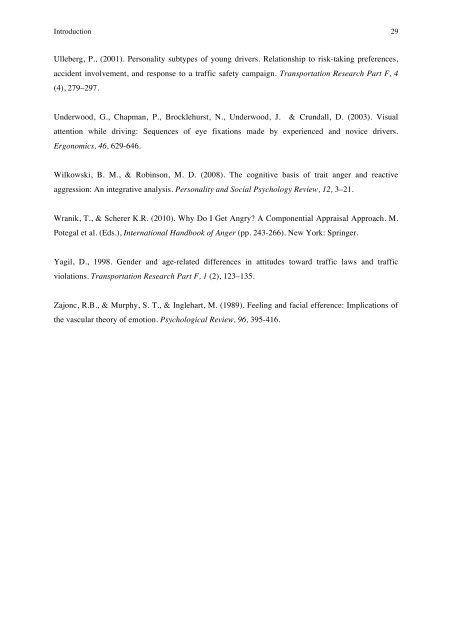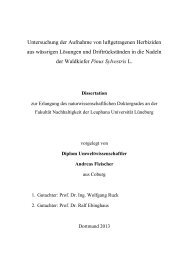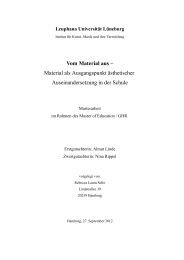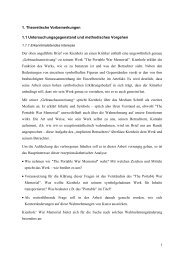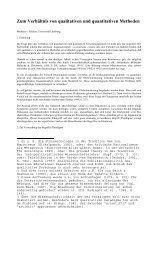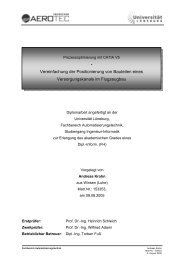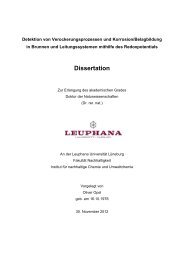Determinants of Emotional Experiences in Traffic Situations ... - OPUS
Determinants of Emotional Experiences in Traffic Situations ... - OPUS
Determinants of Emotional Experiences in Traffic Situations ... - OPUS
Create successful ePaper yourself
Turn your PDF publications into a flip-book with our unique Google optimized e-Paper software.
Introduction 29<br />
Ulleberg, P., (2001). Personality subtypes <strong>of</strong> young drivers. Relationship to risk-tak<strong>in</strong>g preferences,<br />
accident <strong>in</strong>volvement, and response to a traffic safety campaign. Transportation Research Part F, 4<br />
(4), 279–297.<br />
Underwood, G., Chapman, P., Brocklehurst, N., Underwood, J. & Crundall, D. (2003). Visual<br />
attention while driv<strong>in</strong>g: Sequences <strong>of</strong> eye fixations made by experienced and novice drivers.<br />
Ergonomics, 46, 629-646.<br />
Wilkowski, B. M., & Rob<strong>in</strong>son, M. D. (2008). The cognitive basis <strong>of</strong> trait anger and reactive<br />
aggression: An <strong>in</strong>tegrative analysis. Personality and Social Psychology Review, 12, 3–21.<br />
Wranik, T., & Scherer K.R. (2010). Why Do I Get Angry? A Componential Appraisal Approach. M.<br />
Potegal et al. (Eds.), International Handbook <strong>of</strong> Anger (pp. 243-266). New York: Spr<strong>in</strong>ger.<br />
Yagil, D., 1998. Gender and age-related differences <strong>in</strong> attitudes toward traffic laws and traffic<br />
violations. Transportation Research Part F, 1 (2), 123–135.<br />
Zajonc, R.B., & Murphy, S. T., & Inglehart, M. (1989). Feel<strong>in</strong>g and facial efference: Implications <strong>of</strong><br />
the vascular theory <strong>of</strong> emotion. Psychological Review, 96, 395-416.<br />
!


